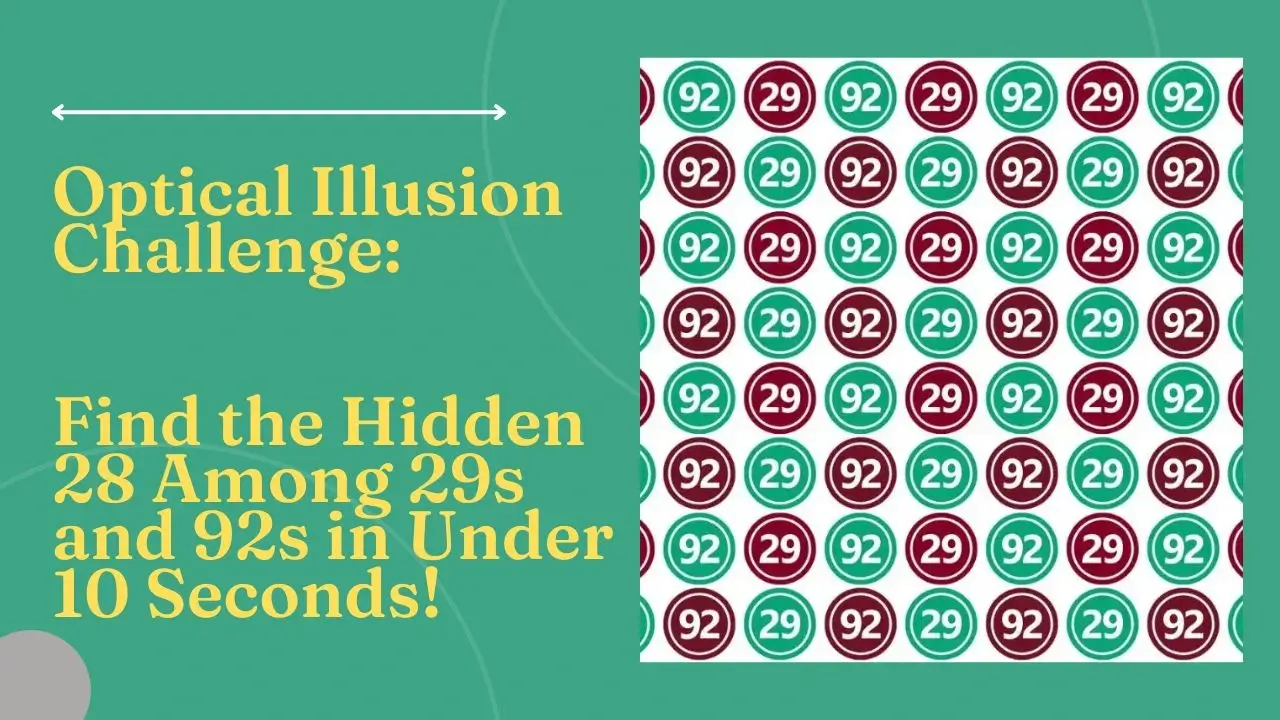Are you prepared for a challenge that will stimulate both your vision and your intellect simultaneously? The online world is currently buzzing about a new social media optical illusion challenge that has been going viral: creating fun, friendly competition and frustration all in one. The logic puzzle is maddeningly simple: In a colony filled with nearly identical numbers — 29s and 92s — your mission is to find The One — 28. Sounds simple? Well, not as simple as you might think.
This optical illusion not only provides entertainment but serves as a challenge for your attention to detail, multi-tasking and set shifting skills. With a multitude of numbers (thousands) all looking like they belong in the image, to a discerning check list style thinking, looking for the odd one out requires extraordinary focus.
Contents
- 0.1 The Challenge
- 0.2 Why This Works: The Psychology Behind the Puzzle
- 0.3 Fun does not stop there
- 0.4 So, did you present it?
- 0.5 Related posts:
- 1 Only the Sharpest Eyes Can Spot All the Hidden Turtles in This Tricky Puzzle
- 2 Only the Sharp-Eyed Can Solve This Optical Illusion: Find the Odd Block!
- 3 Can Your Eyes Handle It? Find the Hidden '44' in This Mind Game
The Challenge
From the first point of view, it seems that all the numbers are mixing together. The marks are shaped in such a way that 2, 9, 8 are in particular, especially in the same and uniform font, they can easily become fools, especially 2, 9, especially when it appears to be quick or far away. This is why make this challenge so interesting – and so difficult.

You have to do the work of numbers of numbers or dullness, in which most of these is 29 or 92, and select a example of 28? 10 try to find it within the seclusion. He is the one who has the same time for someone who has sharp observation skills. If you can find it fast, consider yourself among the aristocratic class!
Why This Works: The Psychology Behind the Puzzle
Optical illusions and visual puzzles like this one work because our brains are wired to recognize patterns. When confronted with a lot of similar items, our mind tends to group them together and ignore small differences. This phenomenon, known as perceptual grouping, is what makes spotting the “28” so difficult — it simply blends in with the crowd unless you break the pattern and search deliberately.
Additionally, our short-term visual memory tends to gloss over repeated information. Since 29 and 92 are repeated throughout the image, our brains naturally begin to assume that all instances follow suit. We stop checking each one individually, which is exactly how the 28 slips through the cracks.
Fun does not stop there
Such puzzles make so much compelling that they are sharing and fun to compete with friends and family. You can screenshots the image, send it to your group chat, and challenge them: “Can you find 28 in 10 seconds?” This is a mild way to attach your brain and connect with others, and who do not enjoy a little friendly rivalry?
This type of brain teaser also has cognitive benefits. Regular attachment to visual puzzles can improve memory, attention and mental agility. They are especially good for children and older adults, who provide a fun way to keep the mind sharp.
So, did you present it?
Whether you have found it in 3 seconds or 30, you have just given a mini-workout to your brain. This is the magic of optical illusion – they cheat your perception, challenge your beliefs, and eventually reward your perseverance. If you haven’t found it yet,

